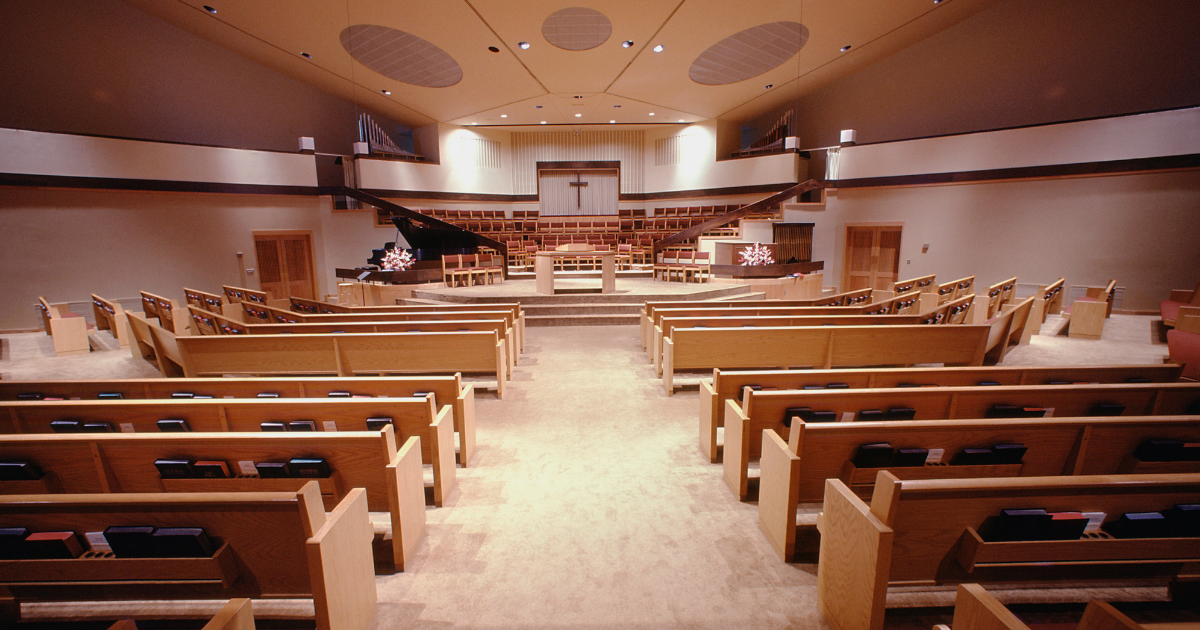Many churches only fix what’s broken. When a leak appears, the roof gets patched. When an HVAC unit fails, it gets replaced. O rwhen a ceiling tile falls, it finally draws attention to the water damage above.
But what if those emergencies could have been prevented—or at least planned for?
At Foundational Facility Management Consulting, we’ve seen firsthand how a reactive approach to church facility maintenance leads to bigger expenses, greater stress, and less welcoming environments for the congregation and community. And we know it’s not because church leaders don’t care—it’s because they’re already stretched thin, juggling ministries, staff, volunteers, and budget decisions with limited time.
Still, the cost of putting off maintenance and repairs adds up fast. If your church is always one emergency away from blowing the facility budget, here’s what you need to know.
There May Be More Problems Than You Can See
Many churches are in the dark when it comes to their facilities. They often don’t have an updated inventory of major assets like HVAC systems, roofing, plumbing, or electrical equipment. In many cases, there’s no clear documentation of when the equipment was installed, when it was last serviced, or who’s responsible for what.
Even when maintenance is happening—like changing HVAC filters—it’s often done inconsistently by a mix of volunteers and contractors. Without a centralized record or preventative schedule, it’s easy for things to slip through the cracks.
Here are just a few real examples we’ve encountered:
- A church had multiple HVAC units with filters that hadn’t been changed in years, which caused strain on the system and led to cooling issues throughout the building.
- Another facility was using the wrong size filters, which allowed dust and debris into the system and led to early wear-and-tear.
- Several churches told us they had put off maintenance for years because they were expecting to move into a new building—but when plans fell through, they were left with deteriorating facilities that required costly catch-up repairs.
When you don’t know what you have or how it’s functioning, you can’t plan proactively—and you end up stuck in a costly cycle of reacting to problems as they arise.
The Hidden Financial Drain of Reactive Maintenance
One of the biggest misconceptions we see is that reactive maintenance saves money. In reality, it almost always costs more—both in the short term and the long run.
Let’s break it down:
- Emergency repairs are more expensive than planned maintenance. When an HVAC unit fails in the middle of summer, there’s no time to shop around or wait for the best price. You’re at the mercy of availability and urgency.
- Shortened equipment lifespans mean more frequent replacements. A well-maintained HVAC system might last 15–20 years. A neglected one? Maybe 8–10.
- Higher utility bills can sneak up on you. Overworked or poorly functioning equipment runs inefficiently, wasting energy month after month.
- Safety risks and liability exposure increase. Cracked sidewalks, unlit parking lots, loose handrails—these issues often go unnoticed until an injury, complaint, or lawsuit occurs.
- Deferred maintenance snowballs. What starts as a small leak can eventually lead to structural damage or mold remediation costs.
Here’s a simple comparison:
Replacing a commercial HVAC unit due to neglect could cost $8,000 or more. Routine inspections and filter changes? Often, a few hundred dollars per year. That’s a massive difference and just one example of many.
Why Volunteer Reliance Needs Structure, Not Hope
Churches are blessed with volunteers who care deeply about the mission. But relying on volunteers without a plan is like handing someone a toolbox and no blueprint.
We’ve seen volunteers step in to do everything from replacing filters to patching drywall. But without clear expectations, documentation, or oversight, it becomes nearly impossible to know what’s been done—or what’s being missed.
You also run the risk of volunteer burnout. When the same handful of people are expected to handle repairs without support or structure, it can strain relationships and lead to inconsistency. Plus, church leaders often feel uncomfortable holding volunteers accountable or asking too much because they are volunteers.
This is where a maintenance plan becomes vital. It gives your volunteers a guide. It helps leaders delegate confidently. And it ensures that your facility doesn’t rely on guesswork or good intentions alone.
Neglected Buildings Reflect More Than a Budget
Your facility is one of the first impressions your church makes—on visitors, families, and the community. Even more, it can be a reflection of your stewardship and how you care for what’s been entrusted to the congregation.
Reactive maintenance doesn’t just create costly repairs—it affects the environment people walk into each week.
Consider how these issues might impact your ministry:
- Rooms that are too hot or too cold during worship
- Ceiling tiles stained with water damage
- Leaky faucets or broken stall doors in restrooms
- Unlit parking lots that make people feel unsafe walking in or out at night
Even if people don’t say anything, these issues communicate something. They tell visitors: “We’re not ready.” They tell members: “Maintenance isn’t a priority.” And they can create subtle discomfort that distracts from the mission and message you’re working so hard to share.
There’s a Better Way: Preventative Maintenance and Long-Term Planning
Making the shift from reactive to preventative maintenance doesn’t happen overnight—but it’s more achievable than many churches realize.
It starts with visibility.
A Facility Condition Assessment (FCA) helps you get a clear picture of what assets you have, how old they are, what condition they’re in, and when you might expect repairs or replacements. From there, you can create a preventative maintenance plan that lays out routine tasks month by month—whether handled by staff, contractors, or volunteers.
When your team has a shared plan, it’s easier to communicate, delegate, and stay on top of facility care. It also empowers you to:
- Make better budget decisions
- Build long-term capital plans
- Reduce energy bills
- Avoid last-minute repair emergencies
If you already have a facility budget or plan in place, having it reviewed by a facility management consultant can help uncover gaps and provide expert guidance. Sometimes, even small changes can significantly affect how efficiently your building runs.
Start Taking Control of Your Facility—Before It Costs You More
You don’t have to keep operating in crisis mode.
At Foundational Facility Management Consulting, we help churches like yours take control of their facility care with practical, tailored solutions. Whether starting from scratch or looking to improve an existing plan, we’ll meet you where you are and help you move forward confidently.
Schedule a free 30-minute consultation to talk about your facility challenges and next steps. Let’s start building a stronger foundation—together.



